Regional Economic Forecast & Innovation EXPO
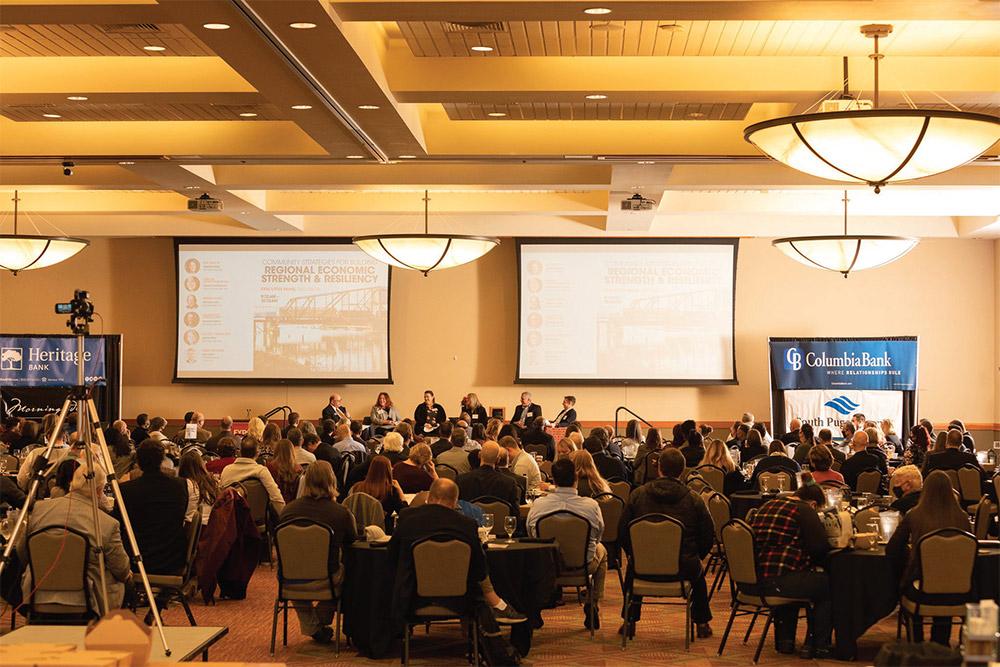
Alliance
The Thurston County Economic Development Council is hosting a regional gathering on Dec. 7 at the Great Wolf Lodge.
This year’s theme of “Building Regional Economic Prosperity” will once again have a strong emphasis on workforce and will showcase the economic impact tribal nations have on the regional economy.
Content and discussions will delve into the issues facing business communities related to infrastructure, energy, AI, the creative economy and more. Business and community leaders will gain insights into critical and emerging trends, and will be provided with information to guide business models and action plans.
The Regional Economic Forecast & Innovation Expo is presented in partnership with the Pacific Mountain Workforce Development Council and the five economic development organizations of the Pacific Mountain Workforce Region.
Target Market
This important networking event draws over 500 decision makers, community leaders and innovators from all sectors of business and industry in the five-county region of Thurston, Mason, Grays Harbor, Lewis and Pacific counties and beyond.
This conference in its 15th year brings together regional businesses from a wide range of industry sectors, as well as leadership from non-profit, education and the public sector. Exhibitors will display cutting-edge technology, products and innovations. Attendees will have the opportunity to network, attend breakout sessions, hear an economic forecast from leading regional economists and more.
EDC Directors’ Panel
Jennifer Baria, Executive Director, EDC Mason; Lynnette Buffington, Chief Executive Officer, Greater Grays Harbor Inc.; Michael Cade, Executive Director, Thurston EDC; Richard DeBolt, Executive Director, Economic Alliance of Lewis County; and Susan Yirku, Executive Director, Economic Development Council Pacific County
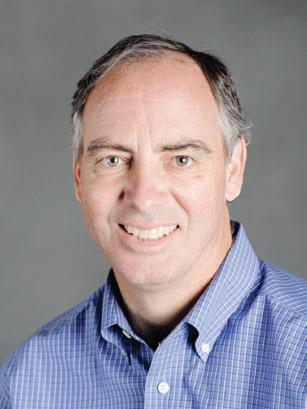
Dr. Hart Hodges
Keynote and Forecast Speakers
James McCafferty, director, Center for Economic and Business Research, Western Washington University; and Dr. Hart Hodges, associate professor, Western Washington University are this year’s keynote speakers.
McCafferty seeks to broaden the connections between the University, the College of Business and Economics and the real world – businesses, non-profits, tribal communities and government agencies – through student internships, classroom based projects and consultative projects drawing on faculty, staff and students.
McCafferty brings a unique perspective and critical tools to problems faced by organizations today based on professional and community service experience at local, regional and national levels. He blends the best approaches from the for-profit, non-profit, government and individual sectors to create blended responses that are effective, efficient and practical while also maintaining long-term sustainability.

Keynote speaker James McCafferty is a director of the Center for Economic and Business Research, Western Washington University.
McCafferty’s core skill areas include research, financial modeling, business development, branding/identity, marketing, finance, tax and legal issues (from a lay perspective), operations, growth management and strategic partnering.
McCafferty has an MBA from Western Washington University, a Bachelor of Science in Journalism/Public Relations from the University of Oregon, is a Certified Global Business Professional, serves as an officer for the Seattle Economics Council and is a past board member of the Association of University Business and Economic Research.
Hodges is a professor in the Department of Economics at Western Washington University and director of Western’s Center for Economic and Business Research. He received his Ph.D. in Economics in 1994 from the University of Washington.
Hodges taught economics from 1993- 1995 at the University of Puget Sound in Tacoma, and then served as the natural resource damage assessment economist for the U.S. Department of the Interior.
He also spent several years working with an economic consulting firm in Alaska. He joined the faculty at Western in the fall of 2000. His research interests include natural resource and environmental economics, health economics and applied business economics. Hodges is a member of the Northwest Workforce Council board and works with a variety of businesses and public agencies serving the mission of the Center for Economic and Business Research.
Breakout Sessions
Breakouts will focus on the very real issues and opportunities facing the five-county region — first and foremost among these — workforce. A strong focus will be placed on the future — where are we at today; where do we want/need to be; and how do we get there?
Major topics include explorations of infrastructure and energy needs, the rising importance of the creative economy and how AI is impacting our regional business world.
From the importance of planning, to the very real challenges of implementation, the panels of experts will engage you in discussions on how to best create the world we want to live in. Intent will also be given to how diversity, equity, inclusion and belonging are woven into these themes and innovations.
“The annual EXPO is a great way to end the year. (Last) year’s breakout sessions were informative,” said Tenino Mayor Wayne Fournier. “I especially appreciated the chance to network all day at the event.”
“Learning about the way the EDC helped transform the supply chain for locally sourced grain inspired me,” said Port of Olympia Commissioner Amy Evans about last year’s EXPO. “The EDC EXPO can help other industries evolve by bringing stakeholders together and reimagining the way our local economy works. Thankful for the opportunity to attend.”
If You Want to Attend
The Regional Economic Forecast & Innovation EXPO is from 7 a.m. to 4 p.m. on Dec 7 at the Great Wolf Lodge. Attendees: $100; exhibitors: $700 (includes two registrations). Tickets can be purchased at thurstonedc.com.
Hydrogen Program Could Rake in $40B in Private Investment
U.S. president Joe Biden recently announced an ambitious $7 billion program to grow the domestic market for hydrogen, a relatively clean energy source.
Billed as a magnet for private investment, the funding will go toward establishing seven regional hydrogen hubs. By producing some 3 million metric tons of hydrogen a year, the hubs could eliminate 25 million metric tons of carbon emissions annually — roughly the same as the pollution from 5.5 million gas-powered cars.
Biden claimed his $7 billion initiative will draw more than $40 billion in private capital to the hydrogen hubs. “Federal investments attract private sector investment,” he told the audience during an event at the Port of Philadelphia on Oct. 13. “A lot of it.”
Spanning 16 states, the seven hubs will finance proposed hydrogen projects run by local utilities and private companies.
Startups that produce, transport, and store hydrogen are becoming buzzy. This year as of Oct. 13 in the U.S., private equity firms had committed $6.9 billion to them via 29 deals, according to PitchBook, versus $5.6 billion for the whole of 2022. Venture capitalists have invested $2.5 billion across 187 deals so far this year, compared to $4.2 billion for the previous year.
Meanwhile, Biden’s hydrogen program saw its first green hydrogen startup unicorn (a company valued at a $1 billion or more): Electric Hydrogen. Its latest series C fundraising round closed at $380 million, with investments from BP, Microsoft Corp., and United Airlines.
Hydrogen storage, a complementary and critical process to production, has drawn about $3 billion in capital over the past five years, PitchBook said.
Green vs. Blue Hydrogen
For environmentalists, the sticking point with the Biden administration’s investment is whether the hubs will produce hydrogen via green or blue methods. Green hydrogen is more environmentally friendly because unlike blue hydrogen, it yields no greenhouses gases during production.
“Two-thirds of total project investment are associated with green (electrolysis based) production, within the hubs,” the White House’s press release stated.
The hydrogen hubs will impact steelmaking, a fossil fuel–reliant industry that the Biden administration hopes to pivot to hydrogen. The sector currently accounts for 9% of global greenhouse gas emissions, according to environmental group the Sierra Club.
But the proposed hubs in steelmaking counties — those in the Appalachians and the Midwest — would use blue hydrogen production. Also, environmentalists maintain, Biden’s program isn’t far-reaching enough to make steelmakers switch to hydrogen from the outdated blast furnace, which uses coal to produce steel from iron ore. Because moving to hydrogen involves updating those furnaces, the costs would add up.
Green hydrogen uses an extraction method that splits water into hydrogen and oxygen through electrolysis powered by renewable energy, such as the Northwest’s hydroelectric dams.
Hydrogen obtained this way can be stored or used in industrial or heavy mobility processes, according to Spanish energy giant Iberdrola. Given that the energy source for production is already green, only oxygen is released into the atmosphere, so the hydrogen has zero carbon emissions.
The downside of this method is its high costs. But they should fall 30% by 2030, according to the International Energy Association (IEA), thanks to cheaper renewable energy and economies of scale in hydrogen production.
Blue hydrogen is more economical to produce. But it requires heating methane — a form of natural gas — to separate hydrogen from oxygen, with carbon dioxide as the byproduct. Current practice is to store the CO2 underground or beneath the ocean via “carbon capture” to prevent release into the atmosphere, but there’s still a risk of leaks.
Hydrogen is the next green thing for WA
Anyone who drives out to the Columbia Gorge or into Eastern Washington sees green energy in the state’s huge hydroelectric dams, towering windmills and shining solar panels. There’s even the odd geothermal system tucked away. Now, thanks to an infusion of federal cash, Washington will up its stake in another green energy sector — hydrogen.
The Biden administration last week announced funding for seven hydrogen production hubs across the country. One of them is in the Pacific Northwest. Washington, Oregon and Montana will receive up to $1 billion for eight hydrogen projects, half of them in Washington.
Hydrogen is an excellent way to store energy. It combusts easily, without creating greenhouse gases, and it’s portable. So a long-haul truck could run on hydrogen and top off its tanks just like it does with diesel. Hydrogen also can power generators and is used to manufacture fertilizer.
The trick is getting enough hydrogen. It’s the most abundant element in the universe, but it likes to bond with other elements. Two hydrogen atoms combine with one oxygen atom to make a water molecule. Separating them requires energy.
Because Washington already produces a lot of green energy, it can supply clean electricity to split water into hydrogen and oxygen through a process called electrolysis. That will help the state and the nation reach important greenhouse gas-reduction milestones to help curb the worst of climate change. Some of the technology is still developing, but the science is sound.
Other hydrogen hubs without bountiful sunlight, wind and waterways will rely on natural gas and must sequester greenhouse gas byproducts.
The proposed Washington sites are near Bellingham, Centralia, East Wenatchee and Kennewick. Each is located along a major transportation corridor and is a relatively rural community that will benefit from investment in a burgeoning, future-forward industry. The projects will create thousands of temporary construction jobs as well as hundreds of permanent jobs.
The $7 billion that the Biden administration will spend on hydrogen was included in the 2021 Bipartisan Infrastructure Law. The administration hopes that its initial investment will spark more than $40 billion of private investment in the projects.
Washington has built out its green energy infrastructure for decades. Now that is paying off as the state is perfectly positioned to capitalize on hydrogen, the next green thing.
Member Spotlight
Pacific Northwest Cookie Company Offers Fall Spec
By The Economic Alliance of Lewis County

Photos courtesy Pacific Northwest Cookie Company

Photos courtesy Pacific Northwest Cookie Company
Pacific Northwest Cookie Company was founded by Callie Carpenter in 2018 when her brother became gluten and dairy intolerant.
Built by the love of baking and delicious cookies, Carpenter set out in 2018 to make a vegan, gluten free and soy free cookie so delicious that her brother and even her traditional baking grandmother and mother would love them too.
They knew cookies would have to be completely reinvented, but it would have to be without compromising flavor, texture and consistency.
With their family pride on the line, they set out to make a cookie so good and so naturally cookie-ish that you would never be able to tell it was also 100% vegan and gluten-free.
After reinventing their family recipe from months of rigorous testing, they realized their cookies would be a game changer for those with food intolerances, restrictive diets and those just wanting to eat healthier.
The Pacific Northwest Cookie Company was officially born. Some laughed and others mocked, while others even thought it was a joke — that is until they took their first bite. They witnessed jaw-dropping reactions from critics and cynics alike, and like a wildfire, the word spread fast about their cookies.
They were invited to participate in an investors’ pitch competition, and won the Alliance’s business incubator competition and walked away as one of the winners, earning a $10,000 scholarship to build their business further.
A Better Vegan and Gluten-Free Cookie
Since then, they’ve been baking the best vegan and gluten-free cookies in the game. Word has gotten out fast because there simply isn’t a vegan and gluten-free cookie on the planet like theirs. They’ve cracked the cookie code, and done it with locally sourced, wholesome ingredients all without compromising flavor, texture and those little nuances that make a cookie, a cookie.
From tasty classics, like Chocolate Chip and Peanut Butter, to distinct palettes, like Molasses and Snickerdoodle, to textured delights, like Double Chocolate and Oatmeal and Raisin, they have a strong line-up of tasty treats.
Seasonal Treats
For the holiday season, Pacific Northwest Cookie Company has created two specialty items — Pumpkin- Doodle and Peppermint Hot Chocolate (which will be featured at the upcoming Polar Express excursions put on by the Chehalis-Centralia Railroad).
- Pacific Northwest Cookie Company cookies outlets in Lewis County
- Arrowhead Coffee — 109 Bunker Creek Road, Chehalis
- Avenue Espresso — 921 W Main Street, Centralia
- 4237 Jackson Highway, Chehalis
- 125 Kirkland Road, Chehalis
- 1757 N National Ave., Chehalis
- Bray’s — 13040 Highway 12, Packwood
- Burger Claim and More — 20320 Old Highway 99, SW Centralia
- Coffeezaun — 1595 National Ave., Chehalis
- Fiddler’s Coffee — 1220 Mellen St.
- 101 Interstate Ave., Chehalis
- Jeremy’s Farm to Table — 576 W Main St., Chehalis
- Jeremy’s Fruit Stand and Market — 1849 National Ave., Chehalis
- Jones Creek Brewing — 173 Beam Road, Chehalis
- King Street Cove and Bistro — 200 S King St., Centralia
- Let’s Play Something — 109 N Tower Ave., Centralia
- Market St. Bakery — 492 N Market Blvd., Chehalis
- The Station Coffee Bar and Bistro — 120 S Tower Ave., Centralia
Discover Tilton River State Park — A Hidden Gem in Lewis County
By Lenee Langdon
Program CoordinatorTourism Alliance of Lewis County
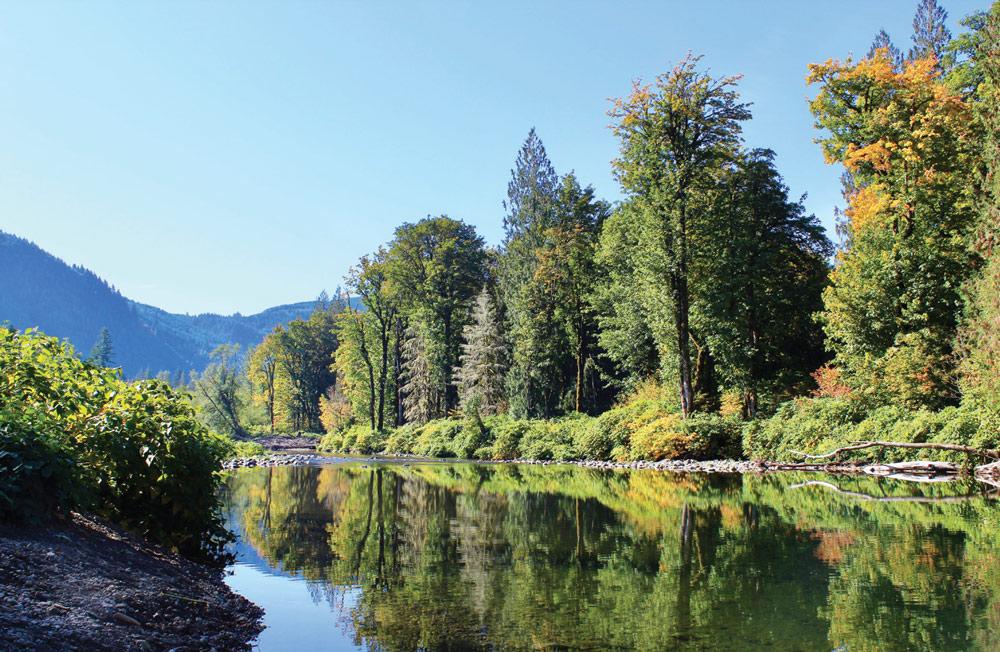
Photo by Lenee Langdon
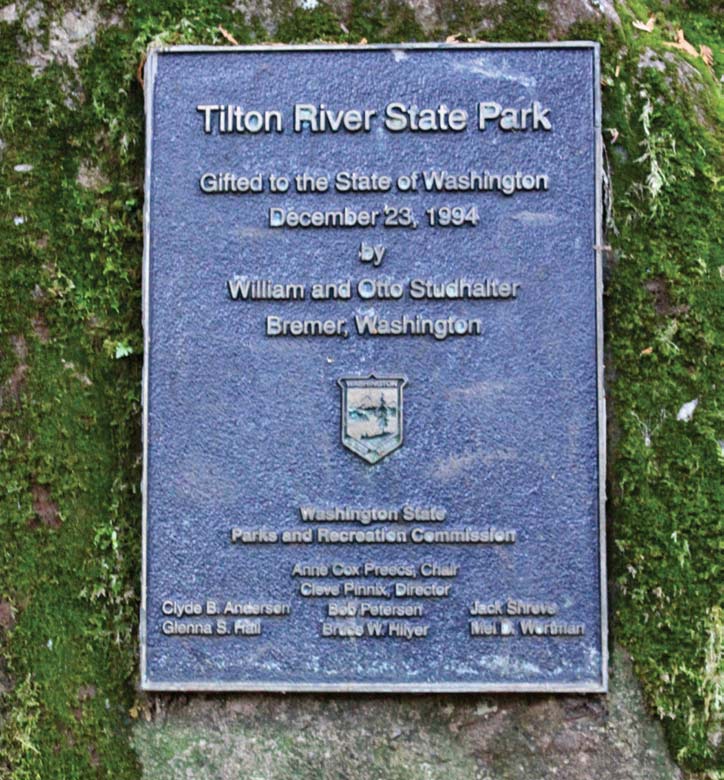
Photo by Lenee Langdon
Nestled in the picturesque landscapes of the Pacific Northwest, Tilton River State Park is a hidden gem waiting to be explored.
Located in Lewis County, this park offers an incredible natural retreat for outdoor enthusiasts and those seeking a serene escape from the hustle and bustle of city life.
Natural Beauty
Tilton River State Park is a haven for nature lovers. The park boasts lush forests, serene meadows, and pristine riverbanks.
As you wander through trails, you’ll encounter a diverse range of flora and fauna. Keep your eyes peeled for the myriad bird species that call the park home, making it a paradise for birdwatchers.
Recreational Opportunities
The park offers a variety of recreational activities for visitors of all ages. Anglers will find Tilton River a great spot for fishing. The river is known for its healthy salmon and trout populations, providing ample opportunities for a peaceful day of angling.
Hikers and explorers will appreciate the network of trails that wind through the park. These trails vary in length and difficulty, catering to both beginners and seasoned hikers. Whether you’re seeking a leisurely stroll or a more challenging hike, Tilton River State Park has it all.
A True Pacific Northwest Gem
Tilton River State Park is more than just a park; it’s a sanctuary of natural beauty, a playground for outdoor enthusiasts and a place to escape the stresses of daily life.
As you explore its trails, cast your line into the river, or simply unwind in the great outdoors — you’ll discover why this park is a hidden gem in the heart of Lewis County.
Whether you’re a local or a visitor, Tilton River State Park welcomes you to experience its magic and create lasting memories in the embrace of nature.
Getting There
Tilton River State Park is easily accessible, making it an ideal day trip. The park is located just a short drive from nearby towns, making it a convenient destination for anyone in the region.
Tilton River State Park is located on state Route 508, about halfway between Cinebar and Morton.
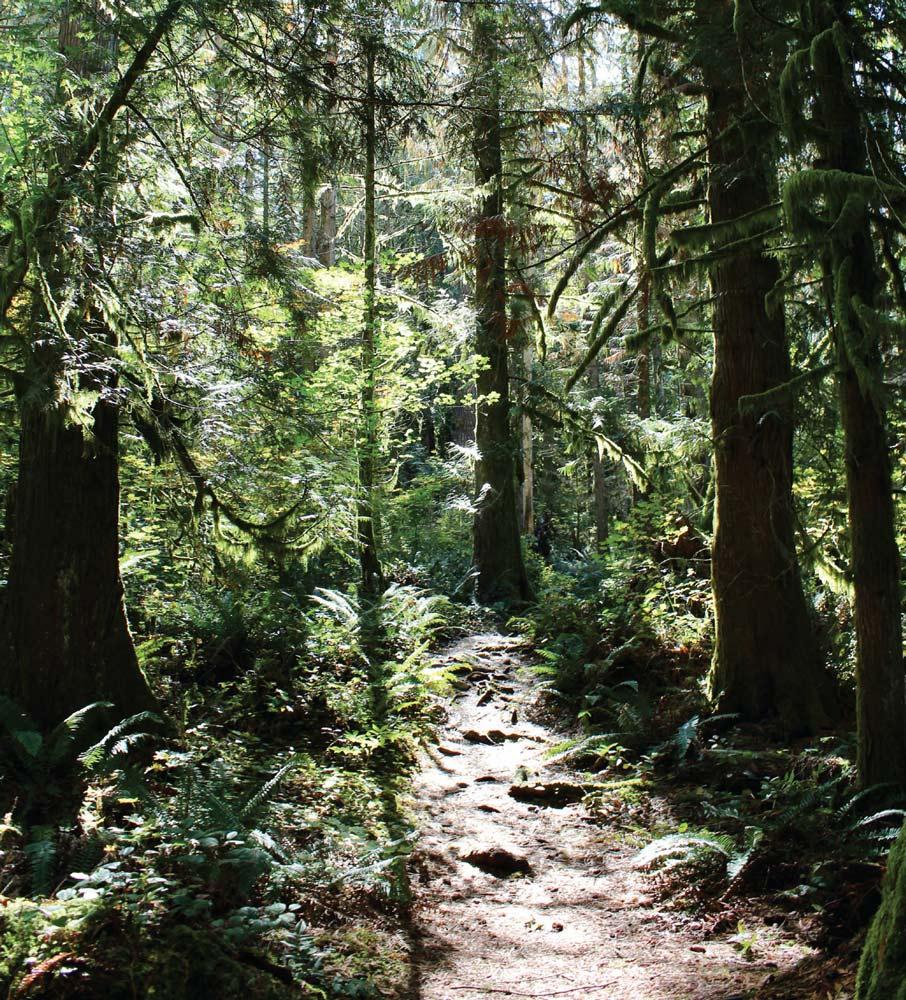
Photo by Lenee Langdon
Solitude can be found walking the trails throughout the Tilton River State Park. Pictured below, a plaque details the 1994 gift of the land making up the Tilton River State Park by William and Otto Studhalter.
Fall Highlights in Our Region
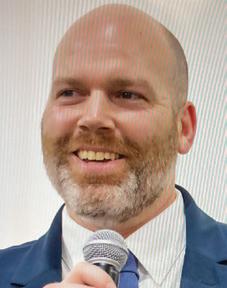
Luke Moerke
Chair - Economic Alliance of Lewis County
It’s October and fall is in full swing. It is amazing how fast the seasons come and go, but whether we are ready for them or not, they’re here, and then gone.
Fall is one of my favorite seasons for many reasons; a few of those are harvest time, making apple cider, hunting and cooler weather. All this makes me think of all the good things that are happening around our county. Let’s visit a few to highlight.
The Port of Chehalis was able to secure $3.14 million in final grant dollars for the grain terminal project, with help from U.S. Rep. Mary Glusenkamp-Perez, and the Northwest Agriculture Business Center (NABC).
The Southwest Washington Growers Cooperative is likely elated to see this happen, as 2023 harvests appear to boast record numbers. The growers cooperative is led by Dave Fenn, whose addendum to one of my last columns was much appreciated. He is an authority on farming, and I respect his knowledge of such.
The cooperation of the NABC and the Port of Chehalis is a great example of getting things done to serve a need. I applaud them for that and look forward to other ways we can work together in the future. Fenn’s highlighting of the near plight of crops due to required halts in harvest only reinforces the need that this project will serve.
There is a desire to find easier access to markets for our local farmers and I think we would all benefit from that realization. This is something that Maureen Harkcom of the Lewis County Farm Bureau has touched on as well.
I encourage anyone reading this to think more about where your food comes from and try to find ways to access it locally. For farmers, if you’re interested in engaging in the conversation more, please reach out to the NABC (Mike Perroni) or Maureen Harkcom of the Lewis Farm Bureau for information on a stakeholder meeting in November being facilitated by the Economic Alliance.
Next up is the big announcement of the Pacific Northwest being selected as a Hydrogen Hub by the federal government. This is confirmation that the groundwork that has been laid and is being laid for an emerging energy market is the prime reason Lewis County is one of the first mentioned by Gov. Jay Inslee when it comes to a site to suit this need.
There is no doubt that across the country, significant investment is being made in this technology. Would you rather that investment go somewhere else as the TransAlta plant shutters, or here? That is rhetorical of course. The fact is, it’s partly our tax dol-lars being used, so why wouldn’t we want them re-invested here, rather than Oregon, California or somewhere else. There will be a huge benefit to our local economy if this plays out. I believe we should continue to be diligent in preparing for this. We need to be smart on housing, infrastructure, and plan out the projects that we have in the next 3 to 10 years to accommodate growth in manageable ways. The Alliance is dedicating time and resources to things like Dig Once, The Housing Alliance, and others to try to help in these areas. This is what I believe most of our local leaders have in mind, and I think it could go very well for our community in the long run. We are looking to facilitate a forum on the hy-drogen topic in the coming month or so. Please keep an eye out for that. The last thing I wanted to mention in this month’s column is the upcoming lo-cal elections. I encourage everyone to be engaged in the process, read up on the candidates, and voice your opinion by voting. Too often there are lots of com-plainers who don’t voice their opinion when it matters. I heard recently that the average voter turnout in Lewis County is 35%. That is good, compared to other coun-ties/ states. I think it should be higher of course. One thing that I usually vote against is raising taxes. However, the proposed emergency services sales tax rate in-crease appears to me to make sense. Please do your own research and con-sider what we will need in emergency services in our growing county in the future. If you’ve ever relied upon emergency services in a life and death situation, you know the value in a system that works. Please keep that in mind and enjoy the rest of your fall season!
•••
Luke Moerke is chair of the Economic Alliance of Lewis County, and owner of Exodus Engineering.
Strong Union Jobs Build Strong Communities
The American Federation of Teachers WASHINGTON, AFL-CIO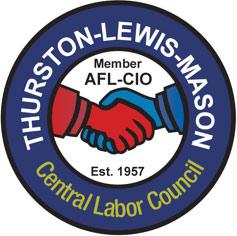
Who develops the workforce?
THE UNION DIFFERENCE
AFT Washington is proud to represent the teachers and staff who are educating and supporting the workforce of tomorrow, preparing them for good jobs. The union difference in pay and benefits gives workers the ability to build strong roots in their communities, and in turn, those communities thrive. Our members are involved in many routes into the workforce. Apprenticeships give people the ability to learn highly skilled jobs while earning a salary; Community and Technical Colleges offer basic education, professional training and academic degrees; 4-year colleges and universities offer degrees and certifications. Every day, Washington’s union educators are building the strong foundations that help our students find their pathway into stable careers. Unions make a real difference for our families, our communities, and our workers. And the answer to the question of who builds the workforce? Workers!
Key Economic Forecaster Predicts Mild Recession at Worst
Economic Alliance of Lewis County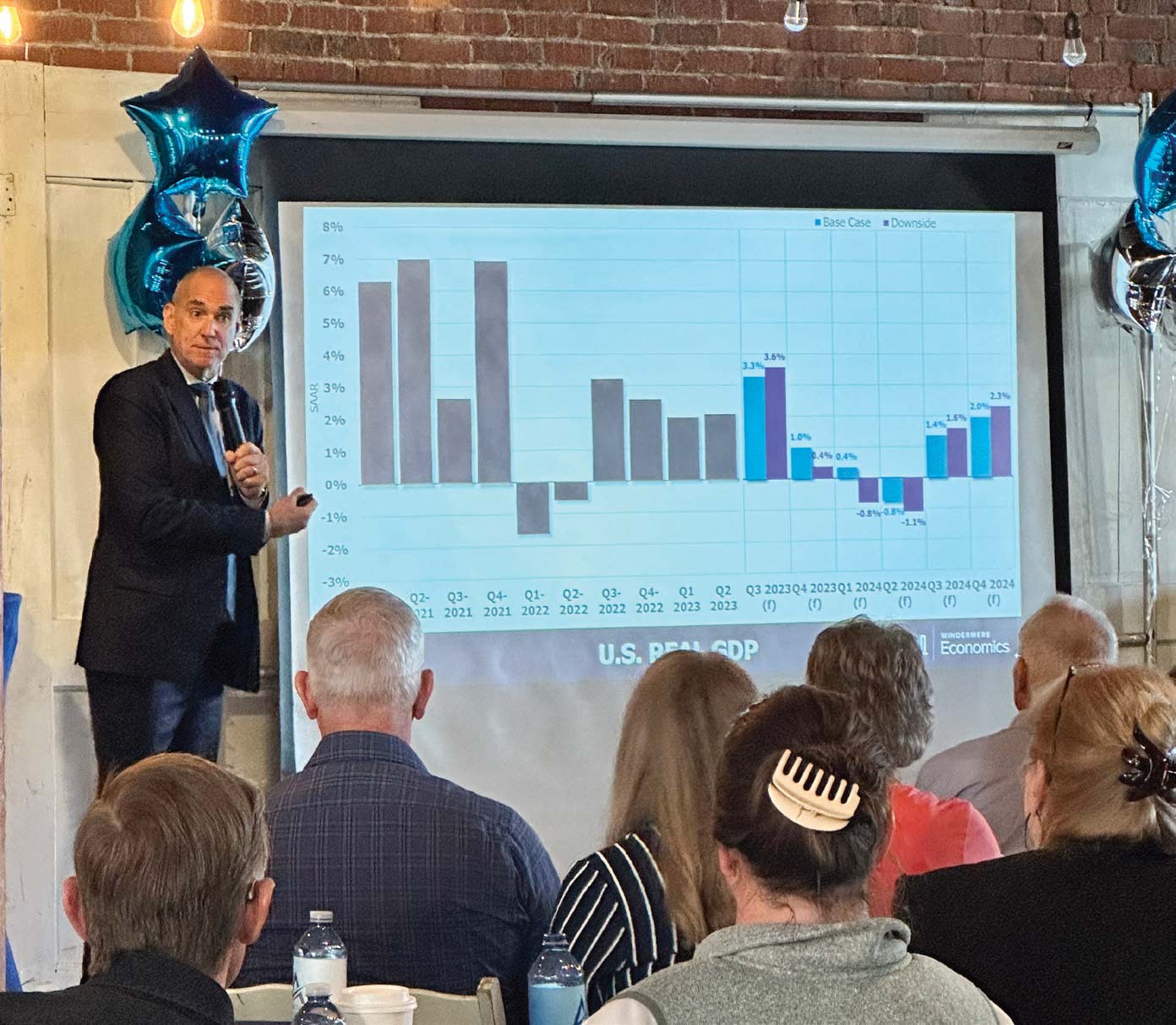
Bishop Road Industrial Site
Economic Alliance of Lewis County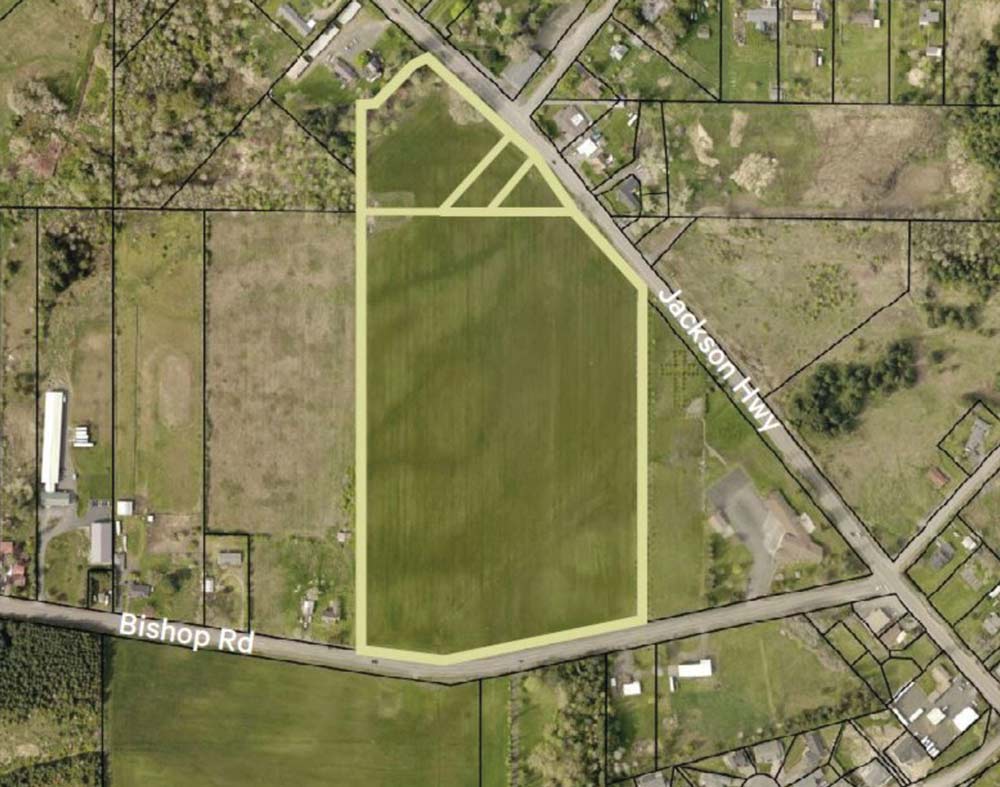
Zoned industrial
Close access to Interstate 5
The Port of Chehalis Bishop Road Industrial Site 1 is near I-5, exit 74, with close proximity to a small rail transload facility.
For information on this property and others available throughout Lewis County (or to list your industrial/commercial property for sale), contact Economic Alliance of Lewis County External Relations Manager
Eric Sonnenberg at [email protected] or 208-206-5407.
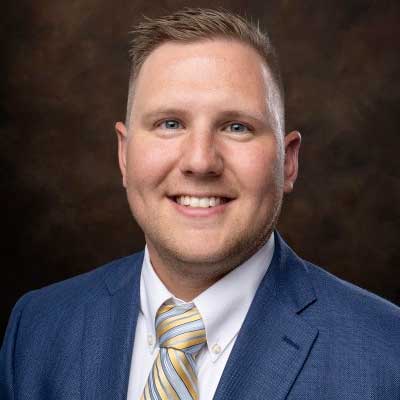
Eric Sonnenberg
Economic Alliance of Lewis County External Relations Manager

